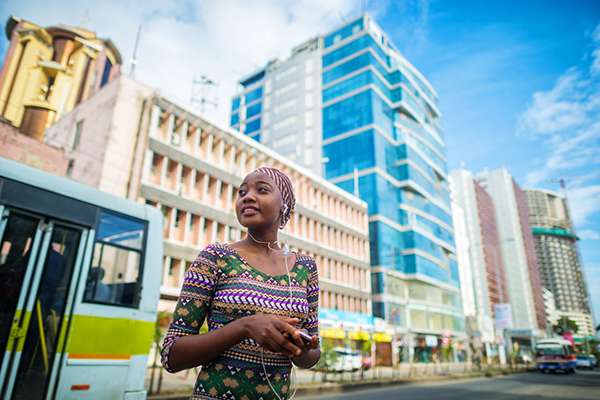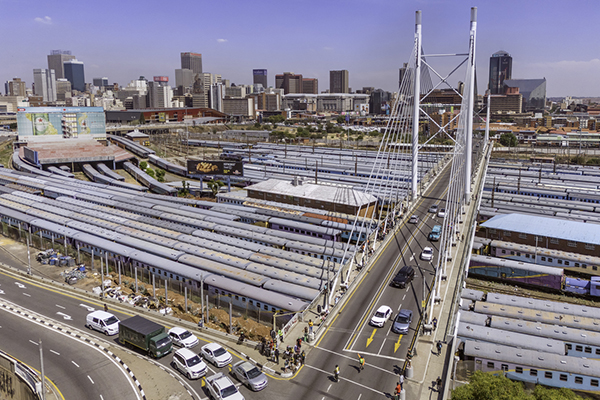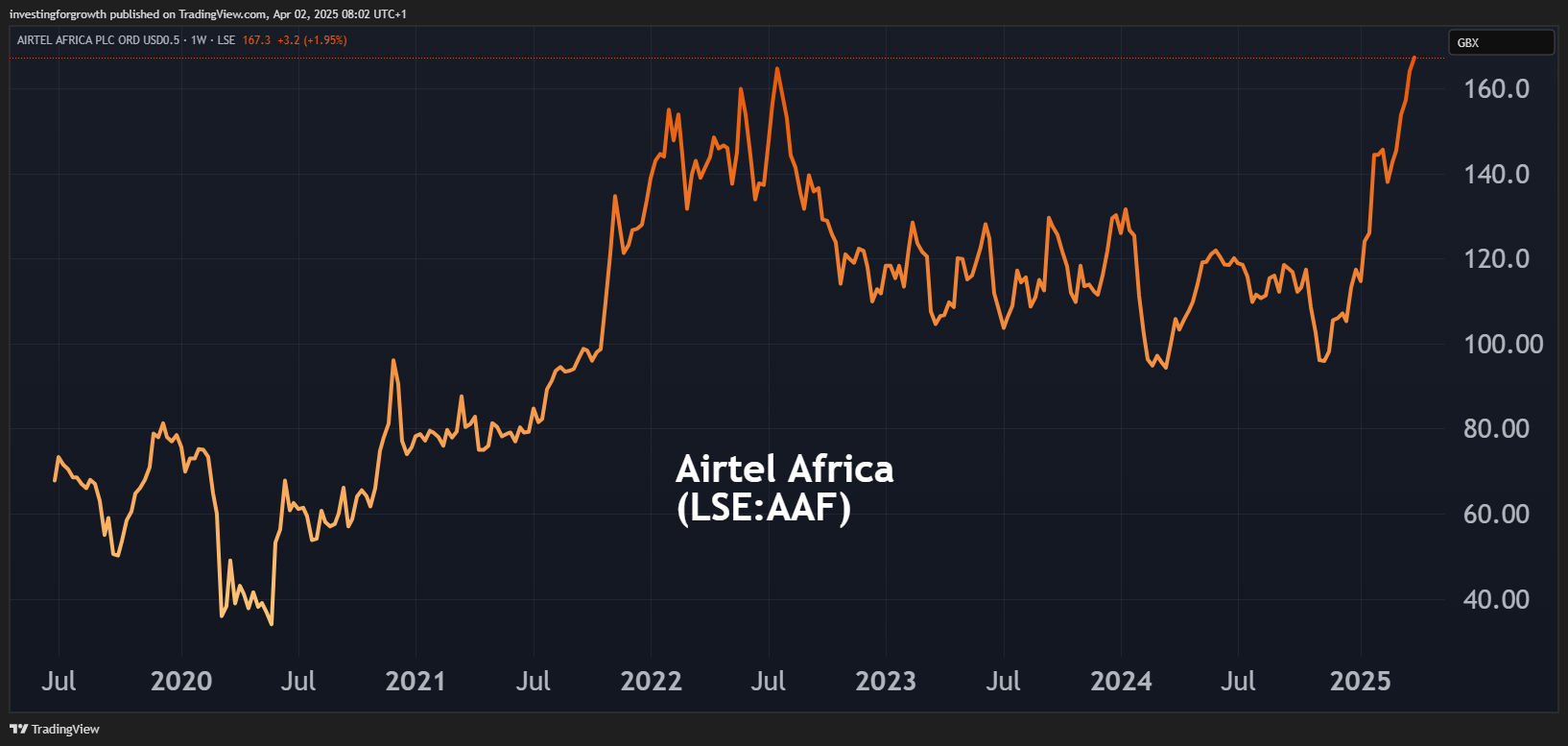Can Africa replicate Asian economic miracle?
A population explosion this century will likely provide a huge workforce in sub-Saharan Africa with potential to drive economic growth. Analyst John Ficenec investigates whether this really is the investment opportunity of a lifetime.
2nd April 2025 09:57
by John Ficenec from interactive investor

Africa could potentially be the opportunity of a lifetime for investors as a population explosion will deliver the resources to become not only the workshop, but the breadbasket of the world. However, the challenges it must overcome to achieve this growth are huge, and the risks during the transformation of the region’s economy make it a market only for the very brave indeed.
The population growth predictions for Africa are absolutely staggering. During the next quarter of a century the United Nations Economic Commission for Africa predicts the continent will add 100 million people every three years, that’s a new Germany quicker than the next Olympics comes round. Africa is expected to reach about 2.5 billion people by 2050, or almost a third of the world’s population on one continent.
- Invest with ii: Open a Stocks & Shares ISA | Top ISA Funds | ISA Offers & Cashback
During the early days of decolonialisation in the 1960s, Africa’s population stood at around 280 million, or one in 10 of the world’s total, but as healthcare has improved and infant mortality rates fall, the population has reached over 1.5 billion today.
It is not just the growth of Africa that makes it so striking, it is what is happening around the rest of the world at the same time. The Chinese population is forecast by United Nations Population Prospects to more than halve from around 1.4 billion today to 633 million by 2100. The hangover from a disastrous one-child policy in the early 1980s to 2016, when combined with economic development and women choosing to have fewer children and later, are all driving one of the largest population decreases of this century. Elsewhere, India and the US are largely forecast to plateau.
Population projections
Country | 2024 | 2054 | 2100 | Change |
India | 1.44bn | 1.69bn | 1.51bn | 5% |
China | 1.42bn | 1.22bn | 639m | -55% |
US | 344m | 384m | 421m | 22% |
Nigeria | 230m | 374m | 477m | 107% |
Ethiopia | 130m | 238m | 366m | 182% |
DRC | 108m | 235m | 429m | 297% |
Tanzania | 68m | 139m | 262m | 285% |
Angola | 37m | 80m | 149m | 302% |
Côte d'Ivoire | 31m | 59m | 104m | 235% |
Source: UN World Population Prospects 2024. India, China and US included for comparison purposes.
The demographic dividend
Africa’s greatest strength is not only growth of the population but its relative youth, with 40% of Africans aged 15 or under, and the median age just 19. This starts to make the rest of the world look like an old people’s home, with the median age in China and the US more than double at 39. Across Europe, the situation is even worse with France at 42, Germany, Spain and Greece at 46, and a positively geriatric Italy with a median age of 48. The UK with a median age of 40 is a relative spring chicken in comparison. All this means that by 2050, a quarter of the global working age population between the ages of 20 and 64 will be in Africa.
So, while the West has its greatest challenges from an ageing population with declining productivity and rising healthcare costs, Africa has the exact opposite, with too many young people and not enough jobs. To harness the youth potential there must be safe and productive jobs on offer, something that is sadly lacking.
For Africa to realise its potential it must replicate the economic miracle that took place across Asia from 1960 to 1990, when a vast proportion of the workforce transitioned from agriculture to higher skills such as manufacturing, with a resulting increase in earning power and quality of life.
- ISA fund ideas for investors looking to add spice to portfolios
- Where pro fund buyers are investing their ISAs in 2025
Unfortunately, there is little sign of that happening. Across sub-Saharan Africa, 22% of young people are not in employment, education or training (Neet), according to the International Labour Organisation (ILO). Of those who do find work it is poorly paid and unstable, with around three-quarters of those in a form of work deemed insecure by the ILO.
Farming remains the biggest single employer across sub-Saharan Africa at 60% of the total, and any change during the past 10 years hasn’t been to skilled work but to low productivity service industries such as trade, transport, and food services. So, one of the big problems Africa faces is an untrained workforce that is unable to quickly transition if multinationals want to relocate manufacturing and production.

A young woman in Dar es Salaam, Tanzania
Economics of a slowdown
Africa is acutely sensitive to the economics of a global slowdown because of the dynamics of the workforce. While inflation runs ahead of target it hits those with the least money, or who have to spend the largest proportion on essentials, the hardest. This is then compounded by governments having to raise taxes to cover a shortfall, asking those with the least to have the broadest shoulders. This creates a tinder box when overlaid on inflexible government.
The Economist Intelligence Unit’s annual democracy index ranks only one African country, Mauritius, as a “full” democracy, with six flawed democracies, 14 hybrid and 23 authoritarian regimes across the rest of sub-Saharan Africa. State control is near impossible across such wide areas of varying terrain. In isolated rural areas, borders are porous and any local conflict can rapidly destabilise neighbouring states.
- 10 hottest ISA shares, funds and trusts: week ended 28 March 2025
- Sign up to our free newsletter for investment ideas, latest news and award-winning analysis
There has been a spate of military coups in Africa recently that illustrate how rapidly things can spread. Mali succumbed to military coups in 2020 and 2021 causing havoc in the region, neighbouring Guinea had a military coup in 2021, Burkina Faso twice in 2022, while Guinea-Bissau had two failed coups in 2022 and 2023. Elsewhere, Gabon was subject to regime change by men in fatigues in 2023, likewise Sudan in 2021 and Niger in 2023. This does not provide the stable legal framework that attracts flows of investment capital or returns for investors.
Niger also highlights another seismic shift in the region as a new generation of rulers turn their backs on Western advisers and support. The incoming military junta there ordered US troops to withdraw last year, and they were hastily replaced by Russian troops at military bases around the country.
Mali, long considered a francophone stronghold, has undergone a revolution. French troops were forced out along with the French ambassador two years ago, and only last week Mali left the alliance of French-speaking countries, a move that follows neighbours Burkina Faso and Niger. Once again, it is Russia that has filled the gap, offering government advisers and troops in the form of Wagner mercenaries.
Roads to nowhere
If the capacity of the workforce is to be realised, the infrastructure must also be greatly improved. Much of the existing rail and transport systems have been built with resource extraction in mind not manufacturing capacity. Also, if modern cities such as Johannesburg are anything to go by, what transport systems that do exist are creaking under the strain of a growing population and years of underinvestment.
Other utilities such as power are no better. In Nigeria, both Lagos and Abuja have experienced blackouts recently, with the World Bank estimating the Nigerian economy loses $29 billion (£22.4 billion) annually to power shortages. South Africa experienced 17 years of blackouts as the state energy provider Eskom struggled to fix the problem and, while things have greatly improved during the last year, it would be a concern for any energy-intensive manufacturing process considering relocating there.
- Watch our video: China and its grip on African mining
- Watch our video: Mining stocks, Trump, tariffs, China and critical metals
China has seen this as an opportunity to project global power by launching the Belt and Road Initiative to build infrastructure across the continent. During the past 25 years China has extended over $170 billion in loans for infrastructure projects. But when taken across the whole continent, it’s just a drop in the ocean compared to the investment required.

Nelson Mandela bridge in Johannesburg, South Africa
The liquidity trap
Africa remains off the radar for all but the most adventurous investors. The UK asset management industry controls some £9 trillion in funds, and of that just 0.3%, barely more than a rounding error, is allocated to Africa, according to the most recent Investment Association (IA) survey.
And there are good reasons as well; Africa having proved to be a graveyard for funds. The most high-profile UK fund that focused on the region was the New Star Heart of Africa fund, launched to much fanfare in 2007 under the direction of Jamie Allsopp, old Etonian and cousin of Location, Location, Location’s Kirstie Allsopp. The fund had a torrid time, losing 30% in its first year before falling victim to the credit crunch and being wound up two years later.
One of the biggest problems for the New Star fund and anyone operating in Africa is a crippling liquidity problem. Retail funds will usually have to offer daily liquidity to underlying investors, and this is a problem due to stubbornly illiquid local markets. Daily trading volumes on the Nigerian stock exchange are around £13 million and Egypt around £56 million. By comparison, the London Stock Exchange has daily trading volumes in the region of £8 billion.
Funds that receive redemption requests have to pay out cash they don’t have, and they can’t realise the value in the underlying assets they hold, this can be bridged by short-term borrowing, but eventually the fund will fail. Even if you can find a buyer for your holding, then getting the cash out can further be complicated by exchange controls restricting the amount allowed to leave the country.
There are large companies in sub-Saharan Africa that will do very well, and not just in the resources sector. There’s big money to be made in infrastructure, cement and construction, but of the Africa-focused funds that do exist, many include companies in the Middle East and Emerging Europe, so are not a pure play on Africa growth. Those that are more focused on the continent are very small.
Xtrackers MSCI Africa Top 50 Swap ETF 1C (LSE:XMAF) says it focuses on large and mid-cap companies from Africa, although the top 10 is weighted to North and South Africa. The Amundi Pan Africa UCITS ETF Acc, launched in 2008, has just £29 million of assets under management and is not available on the ii platform. Meanwhile, the iShares MSCI South Africa ETF USD Acc GBP (LSE:SRSA) is focused only on the continent’s largest economy, not the sub-Saharan Africa theme.
Africa investment opportunities
Many of the largest companies in sub-Saharan Africa focus on the resources sector – mining and oil - among them Nigerian National Petroleum Corporation and Angola’s Sonangol. Many are state owned, and the foreign companies that operate there are typically a play on commodities not regional growth.
That said, there are some ways for the UK retail investor to get exposure to Africa. FTSE 100-listed Airtel Africa Ordinary Shares (LSE:AAF), with a market capitalisation of over £6 billion, has had a better run recently, with the shares up over 200% in the past five years as the demand for mobile communication and payments systems grows. The shares currently at 165p are one of the growth success stories of the region.

Source: TradingView. Past performance is not a guide to future performance.
Nichols (LSE:NICL), the Merseyside based maker of Vimto, has Africa as its largest export market due to the drink’s popularity during the Islamic month of Ramadan. The drinks-maker generates some 12% of group revenue from Africa and it recently shifted can production to Senegal. The shares at £12.81 trade on 20 times earnings to reflect the growth potential.
There are other ways to look at Africa such as through UK-listed insurer Prudential (LSE:PRU). In the most recent set of results, the company made clear its focus for the future would be Africa and Asia. CEO Anil Wadhwani took his inaugural visit to the business in Africa at the start of this year. In 2024, six out of its eight life businesses in Africa delivered double-digit growth in new business profit. At 840p, the shares trade on a modest 11 times forecast earnings having recently come off the lowest level in a decade.
Manchester-based consumer goods group PZ Cussons (LSE:PZC), the owner of Imperial Leather and Carex, generate 28% of their group revenue from Africa, mainly Nigeria. The shares have had a terrible time, falling almost 60% in the past five years to their lowest in around 22 years. The cosmetics and personal hygiene group has had to grapple with a collapse of the Nigerian currency and struggling to get cash out of the country, which led to a recent dividend cut.
On the AIM market there are more speculative opportunities such as Zambia’s largest beef producer Zambeef Products (LSE:ZAM). But the shares at 4.4p have drifted sideways for the past decade after slumping more than 90% from a high of around 50p in 2013.
John Ficenec is a freelance contributor and not a direct employee of interactive investor.
These articles are provided for information purposes only. Occasionally, an opinion about whether to buy or sell a specific investment may be provided by third parties. The content is not intended to be a personal recommendation to buy or sell any financial instrument or product, or to adopt any investment strategy as it is not provided based on an assessment of your investing knowledge and experience, your financial situation or your investment objectives. The value of your investments, and the income derived from them, may go down as well as up. You may not get back all the money that you invest. The investments referred to in this article may not be suitable for all investors, and if in doubt, an investor should seek advice from a qualified investment adviser.
Full performance can be found on the company or index summary page on the interactive investor website. Simply click on the company's or index name highlighted in the article.
AIM stocks tend to be volatile high-risk/high-reward investments and are intended for people with an appropriate degree of equity trading knowledge and experience.